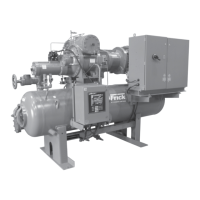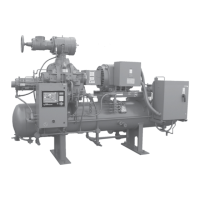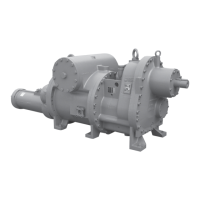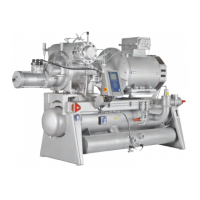XL EVAPORATIVE COOLING PRODUCTS
MAINTENANCE
S140-600 IOM (NOV 07)
Page 13
pan water level should be even with the centerline of the
overfl ow when the unit is not running. This will prevent the
pump from cavitating when the spray system is in operation.
The water level is easily adjusted by loosening the wing nut
on the valve and raising or lowering the ball to maintain the
proper level. The recommended operating pressure for the
water makeup valve is 15 to 20 PSI.
MOISTURE ELIMINATORS
The moisture eliminators are located on top of the unit and
prevent losses of the spray water due to water being entrained
in the air stream as it passes through the unit. The eliminators
should be checked monthly to remove any obstructions that
may be trapped between the blades and to ensure proper
positioning.
WATER DISTRIBUTION SYSTEM
The spray nozzles are accessible by moving the eliminators
in sections from the top of the unit (DO NOT OPERATE UNIT
WITHOUT ELIMINATORS). The spray nozzles are large
orifi ce, cleanable type. For XLC units, the nozzles should be
checked monthly to see that the spray pattern is complete
and even. Figure 12 shows the nozzle orientation in the spray
headers and the spray direction.
Figure 12 - XLC Spray Header Nozzle Orientation
Figure 13 - XLP Spray Header Nozzle Orientation
XLP units include low pressure, large orifi ce, clog-resistant
nozzles. They features a large 2" connection that provides
consistent, highly uniform water fl ow over a 6' square area
of the coil bundle for maximum heat transfer.
The large nozzle opening avoids the pitfalls of most other
nozzles because most materials will pass straight through,
avoiding much of the maintenance required by smaller,
competitive nozzles. There is adequate space below the
nozzle and a wide opening to allow large debris to be pulled
out. Furthermore, with the fi xed design, this nozzle is much
more tolerant of harsh water conditions that lead to wear on
moving nozzles
NOTE: If the nozzle is removed for cleaning, always
ensure that the initial orientation of the nozzle is main-
tained. See Figure 13.
HEAT TRANSFER SECTION
The coil should be examined monthly for signs of scale
buildup, and any obstructions between the tubes should be
removed. If there is evidence of scale buildup on the coil,
check the bleed valve for adequate bleed-off. If the bleed-off
valve is functioning properly, contact your local water treat-
ment company for recommendations.
FAN MOTOR AND SPRAY PUMP MOTOR
The motors should be checked and/or lubricated every six
months according to the motor manufacturers recommen-
dations.
FAN BEARINGS
The fan bearings should be checked monthly and relubri-
cated. The bearings should be lubricated while in operation,
and the grease should be pumped in slowly until a slight
bead forms around the seals. The grease will increase in
temperature approximately 30°F during the relubrication. If
the relubrication must be done while the bearings are not
in operation, the grease capacity of each bearing on the
XLC units is 7/8 ounce. The capacity on the XLP units is
3/8 ounce. The grease should conform to NLGI Grade Two
consistency and should be free of any chemical impurities
such as free acid or free alkali, dust, rust, metal particles
or abrasives. Bearings should be lubricated with hand
grease guns only.
The following types of grease meet the above criteria:
MOBILITH 22
MOBILUX #2
SHELL ALVANIA #2
UNIREX N2
TEXACO MULTIFAX #2
TEXACO PREMIUM RB
FAN DRIVE AND BELTS
The fan and motor sheaves and belt tension should be
checked every month using the procedure outlined below.
The sheaves should be tight on the shafts and should be
aligned properly to minimize belt wear. The belts should
be checked for wear along the edges as any irregularity
will cause vibration. If the belts are not wearing evenly, the
cause could be improper sheave alignment. Use the sheave
alignment procedure below to check the sheave alignment.
If any belt requires replacement, replace all the belts with a
matched set, never one at a time.
SHEAVE INSPECTION
Check the sheaves for proper alignment, excessive corro-
sion, and wear or damage. Also, check the belt for excessive
heat. If the belt is too hot to touch, then the sheaves may be
damaged or need aligning.
If the sheaves have excessive corrosion or are worn or dam-
aged, they should be replaced. Check for sharp edges from
wear or pitting of the grooves from corrosion. Either condition
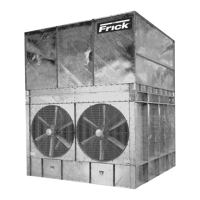
